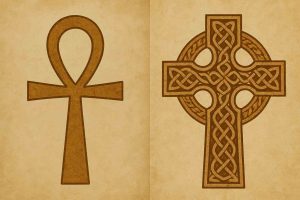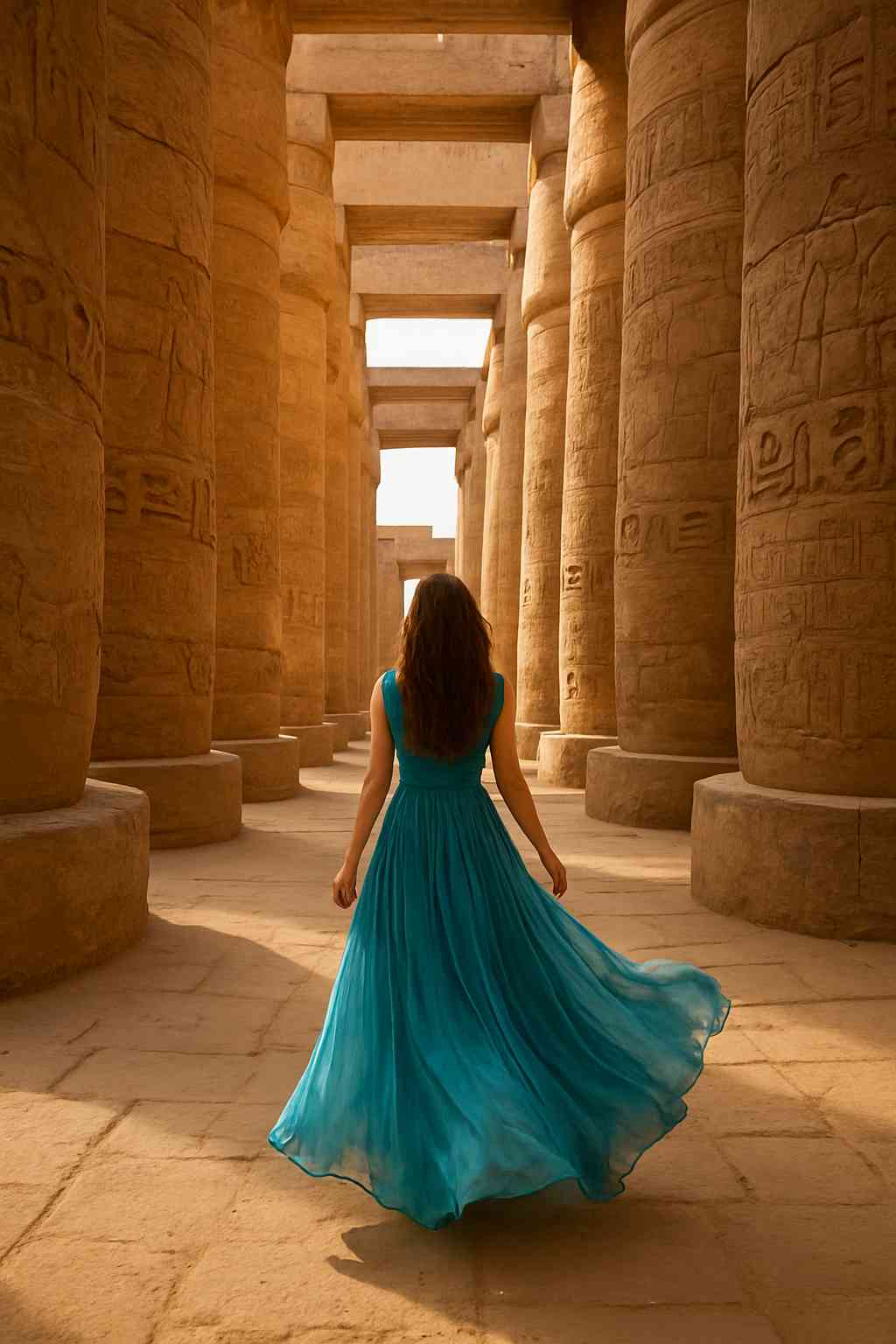The stone is cool under my palm, a sudden comfort against the clinging heat. Around me, Karnak is a river of sound—the shuffle of feet, the distant calls of vendors, a dozen languages bouncing off the towering columns. A guide nearby speaks loudly of Pharaoh Seti I, of the 19th Dynasty, of the weight of the architraves.
The facts hang in the air, solid and undeniable. But they do not touch me.
I feel a hollow space opening inside, a quiet panic. I have traveled so far. Not only am I here – I have left my home in Ireland to set up home here. I have come here – to Karnak and the other temples more than once or twice over the last few years searching for the intangible Egypt that I have known from the first time I set foot in this land, exists. And here I am again today – Mara House is finished and I am faced with the question – “what now? Where do I go from here?” So I come to Karnak, the temple of Creation and numbers, to sit, to search, to try once more to find that thing that has been out of my reach but I still know is here.
I can see the sun-bleached reliefs, smell the dust of millennia. Yet, it feels like watching a magnificent play from behind a thick pane of glass. I can see the spectacle, but I cannot feel the story. The stone is silent for me. It holds its secrets close, and I am just another stranger, another face in the crowd that has passed through for centuries.
I came for magic, and I found a museum, a pile of stone.
I round a corner, find a hidden spot, sit on a ledge (we are not supposed to) and close my eyes, and for a moment, the modern world falls away. It is then I feel a presence beside me. Not a guide but one of those mysterious “people” who just appear when you are asking something and disappear just as suddenly, all the time in Egypt.
“Look here,” a voice says, so softly it’s almost part of the temple’s own whisper. I open my eyes. The man beside me isn’t looking at the grand tableau of a king smiting his enemies. His gaze is fixed on a small, perfect carving tucked away in a shadowed corner. It is not of a king but of a servant offering a cup.
He asks a question, and it hangs in the dusty air between us, simple and devastating. “Why are you here?” He pauses and rephrases the question.
“What are you looking for?”
The question echoes, dislodging a memory. For years, walking into my favorite bookshops back in Ireland, I would pause and ask the very same thing of the shelves: What is here for me today? I never knew which story would find me, which voice would speak. The questions are triggers but they need to be asked together – “Why am I here?” and “What is here for me today?”
And in that instant, I understand. The temple is not a museum. It is a library. A library carved in stone. Each column is a bookshelf, each wall a volume, each hieroglyph a sentence spoken by a human hand. I have been trying to read every single book at once, overwhelmed by the sheer scale of it, deafened by the noise of it all.
His question cuts through the noise. It tells me I don’t need to read it all. I just need to find the one piece, the one carving, the one idea, the one revelation that is meant for me, where I am in my own life, today.
My eyes drift from the offering bearer. I let them wander without agenda, and they settle on a different carving, one I have seen a thousand times but which here and now is different. In this time and space it has a specific, new meaning for me—a single, elegant ankh, the symbol for life, held by a goddess whose face is worn smooth by time.
And my breath catches. The looped cross. It is so like the simple, ancient Celtic crosses that dot the graveyards of Ireland. A shape that bridges Karnak on the Nile and Tara on the Boyne – seat of the High Kings of Ireland. A key common to two lands.

In that silent, dusty beam of Karnak-light, the threads pull taut. The Ireland I left. The Egypt I have chosen. The scribe-god Thoth, keeper of all knowledge, whose stories some say were carried from a place now lost beneath the waves, fragments scattered to our world’s edges. A whisper of Atlantis, not as a place on a map, but as a lost wholeness the human soul remembers.
It was never a random pull that brought me here. It was a homing instinct.
The air shifts. The colossal columns are no longer mere architecture; they are a forest of stories carved in stone, waiting to be chosen. The tourist crowd melts into a blur. I am no longer an observer, or even just a reader.
I am a participant in a conversation that began before my ancestors were born. I am the connection. The thread between them. The question “What is here for me today?” was not just for the temple, but for this land to ask of me. To ask the question is to know the answer, and clarity follows. It is not just me—everyone from foreign lands who walks these halls, asking the right question, is the connection. The connection through time and the connection through space. There is an answer here for every question; one just has to listen.
The chill on the stone is the chill of Irish rain. The sunbeam is the Egyptian sun warming my Irish skin. The silence I craved is the silence of that lost, mythical land, and it is here, now, in me.
This is the moment the temple becomes a library. This is the moment Egypt opens to my page. And I begin to read.
In this silence, the echo I came to find is not in the guidebook. It is in me and, after all these years, I have only just begun to write our stories.

